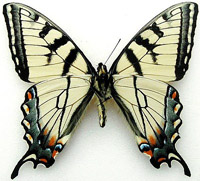Lepidoptera Survey
Date of this Version
12-20-2022
Document Type
Article
Citation
The Taxonomic Report of the International Lepidoptera Survey (December 20, 2022) 10(10), 33 pages
Also available at the TTR webite, Internet Archive, Biodiversity Heritage Library, Zobodate, and Zenodo
Abstract
Subsequent to the significant accomplishment of biological control of Opuntia weeds in Australia, the larvae of the cactus moth, Cactoblastis cactorum (native to parts of South America), were released in many countries for the biological control of native Opuntia species (Simmonds and Bennett, 1966). Inauspiciously, larvae were also released in the Caribbean, where the moth spread naturally and by the human support all over the region (García-Turudi et al., 1971). Its enhanced dissemination rate and the biological potential for invasiveness, suggests that the cactus moth is likely to become an invasive pest of Opuntia in the Southeast United States, Mexico, and southwestern America. Its damage is restricted mainly to the plants of genus Opuntia (plants with the characteristic of flat prickly pear pads of the former genus Platyopuntia, now considered to be the part of the genus Opuntia). In this region, plants of this genus provide valuable resources for humans, livestock, and wildlife such as food, medicine, and emergency fodder, while in the arid and semi-arid regions, the plants play key roles in ecosystem processes and soil conservation. At present, the cactus moth has developed into a severe threat to the high diversity of prickly pear cacti, all over the world for both the native and cultivated species of Opuntia (IAEA, 2002).
Included in
Biodiversity Commons, Botany Commons, Desert Ecology Commons, Entomology Commons, Horticulture Commons, Plant Pathology Commons, Population Biology Commons, Terrestrial and Aquatic Ecology Commons, Weed Science Commons


Comments
Copyright 2022, the authors. Open access material
License: Creative Commons Attribution-ShareAlike-NonCommercial 4.0 International (CC BY-SA-NC 4.0 International)